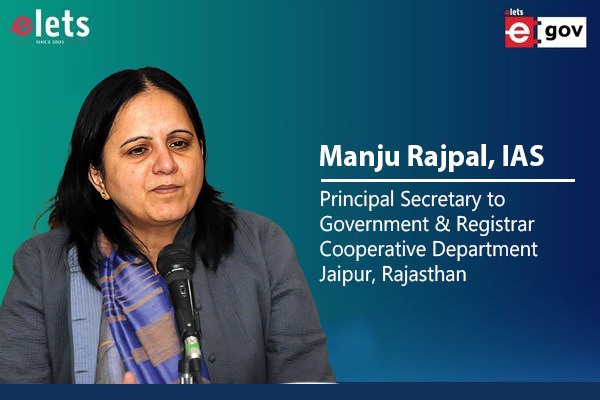Semiconductors are the backbone of modern technology, powering everything from smartphones to satellites and forming the foundation of the digital age. As the demand for semiconductor technology continues to surge globally, India, with its burgeoning technology sector, is poised to become a significant player in the semiconductor industry. By leveraging its vast talent pool, rich resources, and favorable policies, India aims to transform its semiconductor landscape and emerge as a global hub for electronics manufacturing and design.
Emergence of India in Semiconductor Design and Research
India is increasingly recognized for its capabilities in semiconductor design and research. The country has seen a substantial rise in the number of startups and R&D centers dedicated to semiconductor innovation. This surge is fueled by India’s robust education system, which produces a significant number of engineering graduates annually, and the government’s supportive policies aimed at nurturing homegrown technology.
The semiconductor industry in India is expected to generate nearly 1 million jobs in the next 4-5 years. This projection underscores the sector’s potential to not only drive economic growth but also provide high-skilled employment opportunities. The influx of startups in the semiconductor space further highlights the entrepreneurial spirit and innovation that is taking root in the country.
Recent Developments

Increased Budget Allocation
The 2024 Union Budget marked a pivotal moment for India’s semiconductor ambitions. The allocation for the scheme to support semiconductor and display manufacturing was increased by 130 percent, reaching INR 690.3 million (US$83.28 million). This significant budgetary enhancement reflects the government’s commitment to bolstering the semiconductor industry and reducing reliance on imports.

Semiconductor Manufacturing Fund
In 2023, India introduced a $10 billion Semiconductor Manufacturing Fund. This fund aims to incentivize investments in semiconductor fabrication units, addressing one of the critical bottlenecks in the country’s semiconductor ecosystem. By providing financial support, the government hopes to attract global semiconductor manufacturers to set up fabrication units in India, thereby enhancing the domestic production capacity.
International Collaborations
International collaborations have also played a crucial role in India’s semiconductor strategy. The India-US Semiconductor Initiative, for instance, aims to enhance technology transfer and skill development. Such partnerships are instrumental in bringing advanced semiconductor technologies to India and fostering a collaborative environment for innovation.
National Policy on Electronics 2019
India’s National Policy on Electronics 2019 outlines a comprehensive framework to promote domestic manufacturing and reduce import dependence in the semiconductor sector. The policy emphasizes the development of a robust supply chain, fostering R&D, and creating an enabling environment for semiconductor manufacturing.
India Semiconductor Mission
The India Semiconductor Mission, launched as part of the Semicon India programme, is a strategic initiative to build a vibrant semiconductor and display ecosystem. With a financial outlay of INR 76,000 crore allocated in 2021, the mission aims to position India as a global hub for electronics manufacturing and design. The mission encompasses various aspects, including infrastructure development, skill enhancement, and fostering innovation in the semiconductor space.
India’s New Semiconductor Plants

In a landmark move, the Indian government approved the establishment of three new semiconductor manufacturing facilities on February 29, 2024. These facilities are set to significantly boost India’s semiconductor manufacturing capabilities and create substantial employment opportunities.
Semiconductor Fab at Dholera, Gujarat
The first commercial semiconductor fabrication facility in India, located at Dholera, Gujarat, will have a capacity of 50,000 wafers per month. This facility represents a major milestone in India’s journey towards becoming a self-reliant semiconductor manufacturing hub.
ATMP Unit at Morigaon, Assam
An Assembly, Test, Marking, and Packaging (ATMP) unit will be established in Morigaon, Assam. This unit will play a crucial role in the semiconductor supply chain, providing essential services that are vital for the final stages of semiconductor production.
Specialized ATMP Unit at Sanand, Gujarat
Another ATMP unit, focused on specialized chips, will be set up in Sanand, Gujarat. This unit will cater to the growing demand for advanced semiconductor components required in various high-tech applications.
These three units are expected to create direct employment for 20,000 advanced technology jobs and approximately 60,000 indirect jobs, significantly contributing to the local economies and the broader national economy.
Global Standing

Market Overview
The global semiconductor market was valued at USD 544.78 billion in 2023 and is projected to reach USD 1,137.57 billion by 2033, growing at a compound annual growth rate (CAGR) of 7.64% from 2024 to 2033. The Asia Pacific region currently holds the largest market share, driven by significant investments in semiconductor manufacturing and a robust consumer electronics market. Meanwhile, North America and Europe are identified as the fastest-growing markets, propelled by advancements in technologies such as artificial intelligence, the Internet of Things (IoT), and autonomous vehicles.
Market Segmentation
The semiconductor market is segmented based on component, application, and region. Key components include microprocessors, memory devices, and sensors, while applications span across consumer electronics, automotive, industrial, and healthcare sectors. Regional analysis indicates that while Asia Pacific remains dominant, substantial growth opportunities exist in North America and Europe due to increasing technological adoption and supportive government policies.
Conclusion
India’s semiconductor landscape is on the cusp of a significant transformation. With strategic government initiatives, increased budget allocations, and international collaborations, India is well-positioned to become a key player in the global semiconductor industry. The establishment of new semiconductor manufacturing facilities further underscores the country’s commitment to self-reliance and technological advancement.
As the semiconductor market continues to grow globally, India’s proactive measures and investments will likely pay off, creating millions of jobs and fostering innovation. By capitalizing on its strengths and addressing existing challenges, India has the potential to emerge as a major hub for semiconductor manufacturing and design, contributing significantly to the global technology ecosystem.
Be a part of Elets Collaborative Initiatives. Join Us for Upcoming Events and explore business opportunities. Like us on Facebook , connect with us on LinkedIn and follow us on Twitter, Instagram.
"Exciting news! Elets technomedia is now on WhatsApp Channels Subscribe today by clicking the link and stay updated with the latest insights!" Click here!













